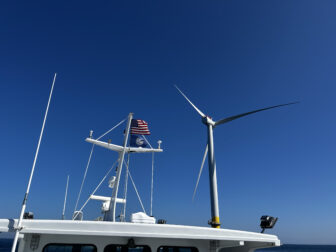President Obama announced on Friday that he plans to delay his final decision on the Keystone XL pipeline until after the Nebraska state Supreme Court decides on a case that will impact the route of the pipeline. This delay could last a year or more, well past this November’s midterm elections. The President’s announcement was met with frustration from both sides, but many project opponents see the delay as a victory. Jamie Henn, a spokesman for 350.org said “It’s disappointing President Obama doesn’t have the courage to reject Keystone XL right now, but this is clearly another win for pipeline opponents.” After all, delaying the project means more tar sands are staying in the ground. Transcanada, the company proposing the pipeline, called the delay “inexplicable.”
 The Cowboy Indian Alliance rode into DC yesterday to set up a week-long encampment on the National Mall urging President Obama to reject Keystone XL. The convergence, called Reject and Protect, will provide a packed schedule of events this week and will bring thousands to DC on Saturday for a massive tipi ceremony and march. The event brings together “tribal communities with ranchers and farmers living along the Keystone XL pipeline proposed route. Farmers and ranchers know the risk first-hand. They work the land every day. Tribes know the risk first-hand. They protect the sacred water, and defend sacred sites of their ancestors every day. They have united out of love and respect for the land and water on which we all depend.” According to Politico, “They’re estimating that as many as 5,000 activists will take part in a march past the Capitol on Saturday.
The Cowboy Indian Alliance rode into DC yesterday to set up a week-long encampment on the National Mall urging President Obama to reject Keystone XL. The convergence, called Reject and Protect, will provide a packed schedule of events this week and will bring thousands to DC on Saturday for a massive tipi ceremony and march. The event brings together “tribal communities with ranchers and farmers living along the Keystone XL pipeline proposed route. Farmers and ranchers know the risk first-hand. They work the land every day. Tribes know the risk first-hand. They protect the sacred water, and defend sacred sites of their ancestors every day. They have united out of love and respect for the land and water on which we all depend.” According to Politico, “They’re estimating that as many as 5,000 activists will take part in a march past the Capitol on Saturday.
Sign up here to be a part of this historic action.
What happens when you have “almost no environmental regulation?” You end up with a situation similar to the one in China where ⅕ of agricultural land is contaminated. According to the Chinese government, “16.1 percent of the country’s soil in general and 19.4 percent of its farmland is polluted with toxic heavy metals such as cadmium, nickel and arsenic.” This is already impacting local communities; “health advocates have identified several ‘cancer villages’ in China near factories suspected of polluting the environment.”
In modern American political dialogue, polarization is the norm; Evangelical Christians and environmentalists are two groups that pundits assume will never agree. But here’s a take on climate change from David Jenkins, president of Conservatives for Responsible Stewardship and a lifelong evangelical Christian. He points out that God created the carbon cycle to keep the world’s carbon in balance and asks, “does it not then stand to reason that God, after designing the Earth’s processes to sequester excess carbon and keep our atmosphere’s chemistry in balance, would prefer that we respect His creation and find better ways to heat our homes and power our cars than using huge amounts of oil and coal?” Many religious organizations share Mr. Jenkins’ view; churches from Missouri to Minnesota have installed solar panels on their roofs and are living up to their goals of being good stewards of the earth.
The Chesapeake Bay, once an icon of biodiversity and delicious seafood, has been marred by pollution in recent years. “Thanks to an Environmental Protection Agency-led plan that puts limits on the amount of agricultural nutrients entering the bay,” efforts to clean up the bay have been strengthening, but Attorneys-General from states across the country have called the plan “EPA overreach,” saying the EPA doesn’t have a right to restrict the pollutants they put into the bay or to tell states how they can use their land. According to Chesapeake Bay Foundation director William Baker, “it’s hardly a mandate being imposed on high down to the states.” So while faraway states are concerned that protecting the Chesapeake Bay might somehow hinder their own economic and social development (an idea that Judge Sylvia Rambo found to be flawed), they fail to consider that polluting the bay hurts Bay-adjacent states. Baker says, “each bay state, including Virginia, voluntarily entered into the current restoration plan because of the economic, recreational, environmental and intrinsic value of a healthy Chesapeake Bay.”
Zooming in on Maryland:
Last week in Lusby, more than 50 people gathered at a community meeting to discuss the potential safety risks surrounding Dominion Resources’ proposed Cove Point facility. Local residents are especially concerned after the recent explosion at a gas plant in Washington. Many residents’ concerns stem from the fact that “other plants do not exist in populated areas. [Local resident, Dale] Allison said he estimates there are more than 300 homes within a 4,500-foot radius of the plant.” Mr. Allison worries that his family, friends and neighbors “will be an experiment.”
But the conversion of the Cove Point facility to a fracked gas export facility is far from a done deal. Sign up here to receive updates about the Cove Point fight and about an upcoming public meeting with the Federal Energy Regulatory Commission as they decide whether to approve Dominion’s plan.
This week, we bring you some common sense from the Frederick News-Post editorial board: Fracking chemicals should be disclosed. After a recent Mother Jones article outlining the health risks posed by fracking, the public is paying attention to the risky practice. Physicians for Social Responsibility “helped draft and promote legislation that, if passed, would allow Maryland health professionals to access information on the specific chemicals used in hydraulic fracturing” Maryland’s Marcellus Shale Advisory Committee is taking up the question of who should have access to information about what’s in chemicals used in fracking. No decision has yet been made, but “that decision cannot be too long in coming at this point. If it decides to permit it, the state has an obligation — and the public has a right — to be fully informed about any and all processes and substances used in this controversial drilling method.”
The Maryland General Assembly passed a bill this session to create a council charged with minimizing the impact of sea level rise on new state buildings. The council will be comprised of “Secretaries of natural resources, business and management, the environment, general services, planning, transportation, and business and economic development; the chair of DNR’s Critical Area Commission for the Chesapeake and Atlantic Coastal Bays; the director of the Maryland Emergency Management Agency; the chancellor of the University System of Maryland; and five others appointed by the governor to represent local government, business and environmental interests.” The council is being formed as a result of Governor O’Malley’s 2012 executive order that sea level rise be considered in future state construction. The bill passed unanimously in the senate and 95-40 in the House of Delegates, opposed by a handful of Delegates who are “skeptical about the role climate change plays in sea level rise.” The Governor will likely sign the bill which has the support of the Maryland Department of the Environment.
Also in Maryland legislative news, the Governor will soon decide whether or not to sign a bill that would kill a major offshore wind project in Maryland. HB 1168, a bill that would put a 15-month moratorium on Maryland’s offshore wind power development, passed both houses of the Maryland legislature. Bill proponents claimed the wind turbines would interfere with “the unique radar and testing mission at the Patuxent River base.” According to the Navy itself, this bill is patently unnecessary. According to David Belote, a former Air Force fighter pilot, commander of Nellis Air Force Base, and director of the Department of Defense Siting Clearinghouse, “if the turbines aren’t spinning, there’s no interference…There’s no need for additional studies to determine that stationary turbines cannot affect radar systems.” Click here to join Marylanders in urging Governor O’Malley to veto HB 1168.
Zooming in on Virginia:
 Last week, a coalition of environmental groups held a forum on the impacts of coal dust in the Hampton Roads area of Virginia. CCAN’s own Leslie Morrison spoke to an audience of around 90 people about the health impacts of coal dust, a fine, powdered form of coal released from any facilities that mine, process, or transport coal. The Lamberts Point Coal Terminal in Norfolk, Virginia, already ships 28 million tons of coal every year—and is legally allowed to release up to 50 tons of coal dust into the air each year. Coal is found in soil samples as far as 7.5 miles away and causes respiratory problems in nearby residents. It contains arsenic, mercury and other particulate matter and is extremely harmful if inhaled. Residents have also been suffering its effects in Curtis Bay, a Baltimore community with some of the worst air quality in the state. Morrison said, “it has been so inspiring to see communities around these facilities taking a stand to protect their air quality and their health.”
Last week, a coalition of environmental groups held a forum on the impacts of coal dust in the Hampton Roads area of Virginia. CCAN’s own Leslie Morrison spoke to an audience of around 90 people about the health impacts of coal dust, a fine, powdered form of coal released from any facilities that mine, process, or transport coal. The Lamberts Point Coal Terminal in Norfolk, Virginia, already ships 28 million tons of coal every year—and is legally allowed to release up to 50 tons of coal dust into the air each year. Coal is found in soil samples as far as 7.5 miles away and causes respiratory problems in nearby residents. It contains arsenic, mercury and other particulate matter and is extremely harmful if inhaled. Residents have also been suffering its effects in Curtis Bay, a Baltimore community with some of the worst air quality in the state. Morrison said, “it has been so inspiring to see communities around these facilities taking a stand to protect their air quality and their health.”
Major climate news came from Virginia last week when the state Supreme Court “ruled that the emails of a former University of Virginia climate scientist are exempt from disclosure under the Virginia Freedom of Information Act.” The case began in 2011 when Michael Mann, a professor at the University of Virginia, came under fire by climate denying Attorney General, Ken Cuccinelli who attempted to prove that Mann was misusing public funds. The Virginia Supreme court found that Cuccinelli had overstepped his bounds. By deciding that Mann’s emails were exempt from disclosure, the justices opted not to “put the state’s public universities at a disadvantage to private institutions.” According to Michael Halpern, program manager with the Center for Science and Democracy with the Union of Concerned Scientists, the state Supreme Court “was right to protect scientists’ ability to pursue tough research questions free from threats or intimidation. Freedom of information laws are meant to keep government accountable, not to enable the harassment of scientists.”
Citizens from across the mid-Atlantic are submitting photo petitions to Dominion CEO Tom Farrell demanding that the company clean up its act. Not only does Dominion Virginia Power’s 15-year energy plan include no new clean energy and an increase in carbon pollution for the commonwealth, but in Southern Maryland, Dominion Resources is trying to build a massively polluting fracked gas export facility at Cove Point. See the faces of people who demand better from Dominion and add your picture to the petition here.






